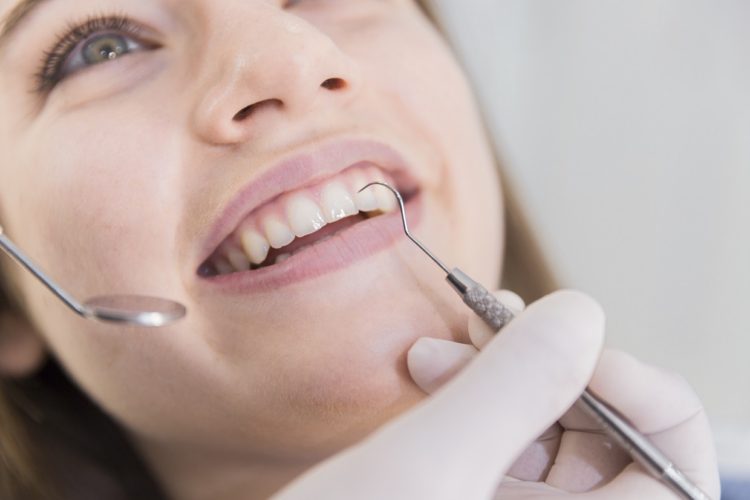What Is An Orthotic?
Orthotics are acrylic (plastic) devices designed to restore the correct function of the bite. It covers all of the teeth and can be fixed or removable (bonded onto the teeth). An orthotic enables the restoration of function. Thus, you can eat while conversing. Orthotics restore individuals to health. However, they are merely instruments used to determine the physiologic position (harmony of the TMJ, muscles, and teeth). Consider orthotics as physical therapy for a healthy TMJ and proper jaw function.


Yvonne Patient Experience
As a teacher, the appearance of Yvonne’s teeth and smile are important to her. After treatment with Dr. Garza, Yvonne’s symptoms are gone and she has a new smile she is proud to show off.
Is A Dental Orthotic Right For Me?
If you have a TMJ disorder (popping and clicking, grading sounds), flat, worn, or clenched teeth, jaw discomfort, ear issues (vertigo, tinnitus), and neck (postural) concerns, NM/Physiologic disharmony, you are a candidate for an orthotic.
Orthotics restore improper function to health and normal function. As orthotics is not a cure but rather a reversible tool, there are no hazards associated with this treatment if the protocol is followed according to Dr. Garza’s instructions. It is possible to remove and discard orthotics.
What Is An Orthotic Vs. Nightguard And Splint?
There are a few dental equipment and treatments that can truly make a difference if you grind or clench your teeth. Occlusal guards and dental orthotics may look similar to the untrained eye, yet their functions are vastly different. While both are solutions for teeth-grinding and clenching, one only prevents future harm, and the other can be the initial step in alleviating pain.
Orthotic
If one’s goals and objectives are to properly bring the muscles to a neutral and relaxed functional posture, then any device must combine physiologic design and anatomical shape. When treating TMJ Dysfunction, it is necessary to know that as muscles are stretched, the position of the jaw and the relationships between the teeth alter, and it is essential to notice this. Incorporating the patient’s anatomy and chewing movements into the orthotic device is crucial for facilitating quick healing during the initial phase of TMD treatment.
Clear acrylic is molded to suit your lower teeth to create therapeutic orthotics. (Whenever possible, we connect orthotics to the lower teeth because they are more pleasant than those attached to the upper teeth.) The orthotic’s biting surface mimics a set of properly aligned teeth.
Nightguard
A night guard is intended to cure bruxism and is sometimes given before a TMJ splint, particularly if your bruxism develops TMD. To alleviate the symptoms of teeth grinding, night guards serve as a barrier between upper and lower teeth. A night guard is a mouthpiece worn during sleep to protect against the harmful effects of teeth grinding, also known as bruxism.
Because a night guard is a subtype of splint, all night guards are splints, but not all splints are night guards. Each type of splint has a particular function and use. TMD splints, for instance, are available in several forms, such as stability (or permissive) splints, repositioning splints, and NTI-tss devices.
Splint
Different types of splints treat Temporomandibular Joint Disorder in various manners (TMD). In general, splints for the temporomandibular joint (TMJ) help jaw muscles to relax, distribute pressure evenly across teeth, ease tension on the joint, and aid in realigning the jaw.
Diagnosis
In order to provide the best possible treatment for both non-pain patients and those who are in pain, a thorough diagnosis is necessary, regardless of the patient’s goal. Muscle disorders, TMJ disk disorders, chronic hypomobilities, inflammatory disorders, traumatic injuries, growth disorders, and aberrant jaw closure patterns must all be differentiated in each patient. Using this diagnosis, we are able to provide the best possible therapy options for each of our patients. All of our orthotic choices include the cost of diagnostic procedures.
Can orthotics make TMJ worse?
Placing an orthotic that further protrudes the mandible will worsen the TMJ condition. The majority of upper splints we encounter have these ineffective designs. If this occurs in your clinic, you can make a rapid adjustment by building up the anterior portion of the orthotic (from lateral to lateral) with cold cure acrylic to allow just the lower anterior to contact the new bite plane, thereby discluding the posterior teeth. Your objective is to prevent the posteriors from touching the plastic. No more than 1 mm of disclusion is required. Typically, it is much simpler to construct an NTI.
How much are orthotics for TMJ?
The cost of TMJ treatment by Dr. Garza varies depending on the patient’s mouth. There are numerous alternatives for tailoring treatment to your particular circumstances. However, the majority of patients can anticipate to pay within a given range based on the type of orthotic they select.
How long do you wear an orthotic?
When worn correctly, a dental orthotic is the first step toward long-term treatment for TMD and preventing further tooth damage. The orthotic is utilized to get a better understanding of your symptoms. So, if this is the case, then the next step is to get your teeth into alignment with those created by the orthotic – and this is phase 2.
Phase 2 may comprise physiologic orthodontics, whole mouth rehabilitation, a combination of the two, or a semi-permanent orthotic, depending on the individual’s needs.
How do you eat with orthotics?
Always wear your orthotics as instructed. If asked to wear it while eating, it may take a while to become accustomed to it. Begin with finely ground meats and soft vegetables (such as potatoes), pasta, yogurts, and soups. Eliminate foods that are difficult to chew, such as peanuts, raw vegetables, candies, gum, and ice cubes. This will require an adjustment but may be achieved with patience and determination.
Am I A Candidate For An Orthotic?
Bruxism, or teeth-grinding, occurs when the jaws are clenched, and the teeth grind against one another. Stress and anxiety are often factors, but sleep disorders, an abnormal bite, and missing or crooked teeth may also instigate this subconscious behavior. If left untreated, bruxism can lead to headaches, a sore jaw, or painful, loose or fractured teeth.
Lila shares her journey on how she started working with Dr. John Garza and the treatment plan that helped changed her life.
To learn more about orthotics teeth, or to arrange an appointment with Dr. John A. Garza, contact (480) 539-7979 now! Our knowledgeable staff gladly serves patients from Gilbert and nearby Arizona communities.

